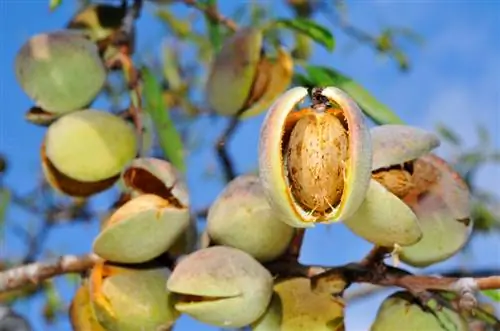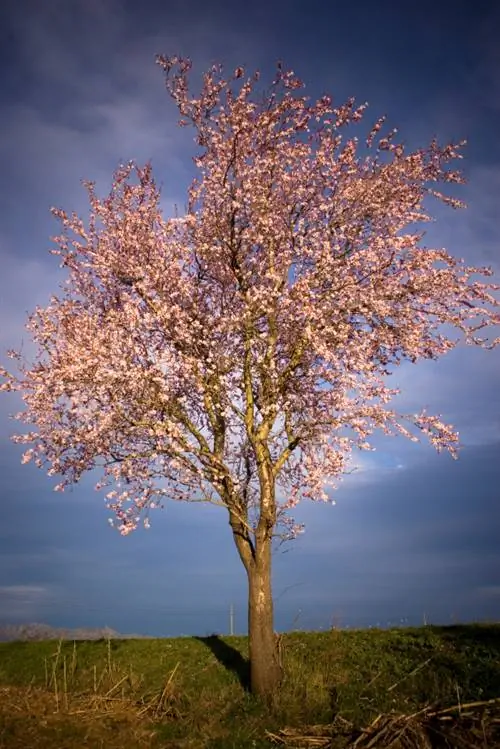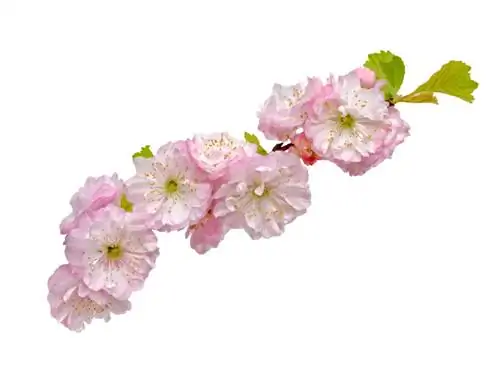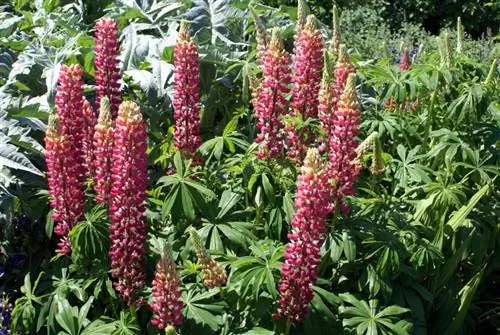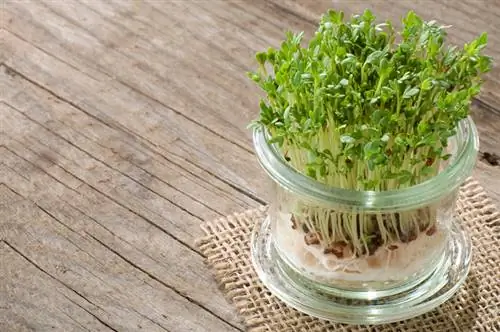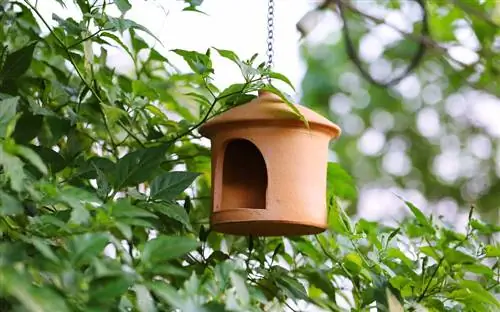- Author admin [email protected].
- Public 2023-12-16 16:46.
- Last modified 2025-01-23 11:20.
Although the almond tree is not one of the easiest plants to care for, with a few simple steps it can thrive in our gardens. The right location and a skillful hand promote magnificent growth.
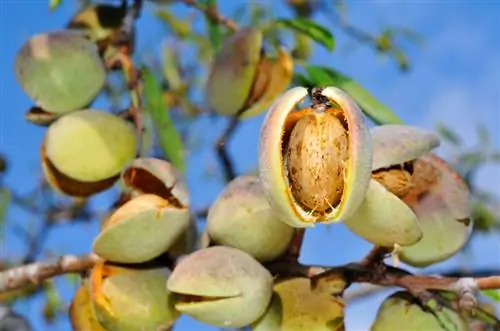
How do I successfully plant an almond tree?
Planting an almond tree is best done in late summer or early spring, in frost-free soil. An ideal choice of location is sheltered and mild. When planting, water the root ball well, shorten the shoots and maintain a distance of 4 meters from neighbors.
Plant at the right time
The ideal planting time for the almond tree is late summer. Alternatively, early spring is also a good time, as soon as the ground is frost-free. At this point, the likelihood of hot spells decreases. Young plants react extremely sensitively to strenuous drought during the growing period.
For this purpose, the gardener recommends shortening all shoots slightly. In this way, evaporation through the leaves is restricted.
Location
The pink almond tree blooms in early spring. This happens long before its delicate leaf buds open. That's why it is very popular among local gardeners.
Generally it is very frost resistant (down to minus 25 degrees). Nevertheless, the almond tree is very sensitive to spring frosts. For this reason, it is important that the tree has a protected location in the garden. He particularly appreciates the mild climate of wine-growing locations.
Successful planting in just a few steps:
- Water the root tree heavily (at least 10 minutes in a bucket of water)
- carefully removing pots, nets or grids
- Remove stones or old roots
- Insert almond tree
- fill with soil
- Planting depth corresponds to pot size
- light pouring recommended
Additional tips depending on soil type
- heavy or wet soils: create drainage
- heavy soils: mix in additional sand
- lean soils: enrichment with compost or humus is recommended
Advance
Alternatively, you can grow your own almond tree yourself. It is advisable to give preference to native species. However, it should be borne in mind that specially grown almond trees are not winter hardy.
This also applies to imported plants. For this reason, tree nurseries offer a wide range of native species or refined varieties. The gardener can be on the safe side with these. They survive the winter successfully despite the bitter cold.
Transplanting
The almond tree is transplanted at exactly the time when species-appropriate planting is possible. When changing locations, we recommend the same procedure as when planting for the first time.
Propagate
Almond trees can be successfully grown from cuttings or untreated almonds.
Substrate
A special substrate is recommended for growing almond trees from seeds. It should be well permeable to water and air. It is also characterized by a lack of nutrients. Of course, the substrate should be free of germs or fungal spores.
Distance
The distance between the almond tree and the neighbor should be at least 4 meters when planting.
Perfect Neighbors
Since young plants are very sensitive to rapid airflow, perennials or even bushes are ideal neighbors. Ideal neighbors are vines or peach trees.
Tips & Tricks
A particularly lush flower usually heralds a successful harvest. This is particularly rich in long, warm summers. The almond harvest is best achieved in the wine-growing regions of Germany.

